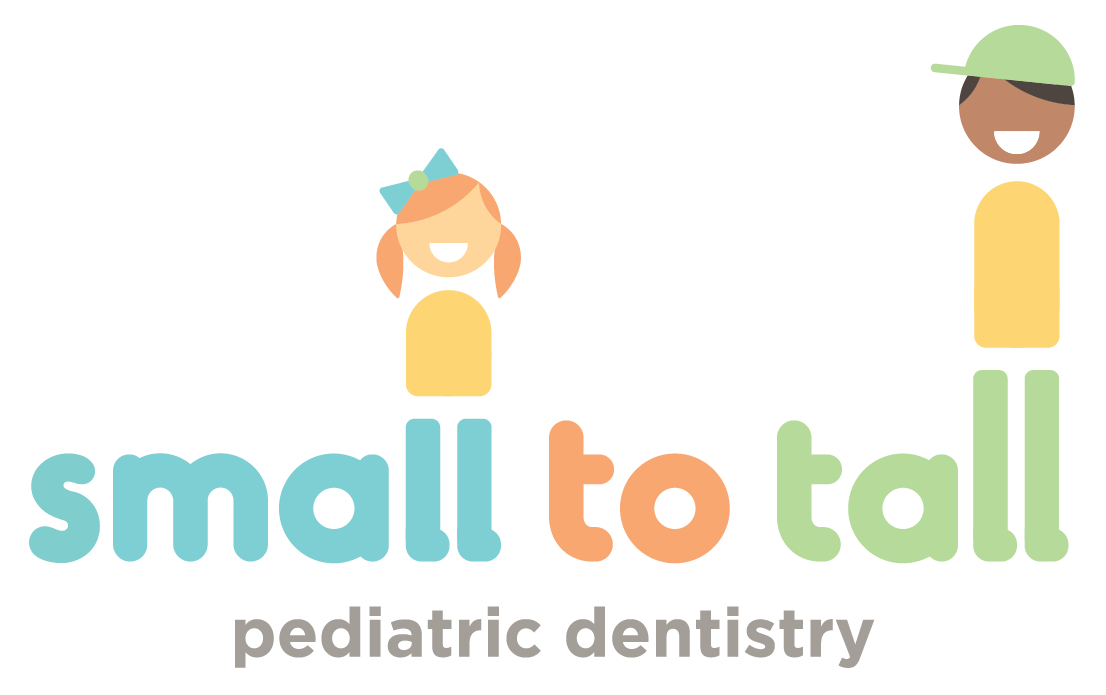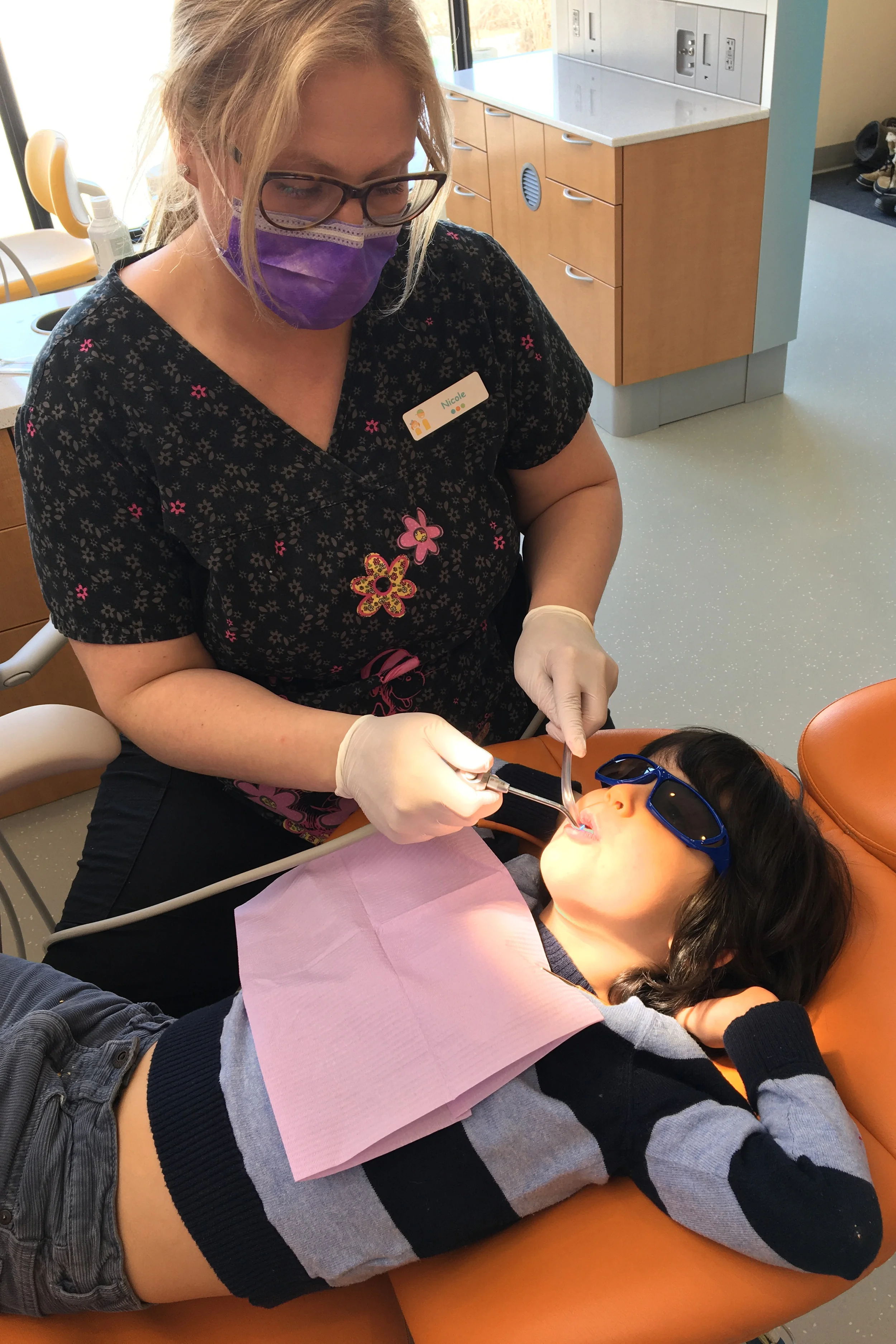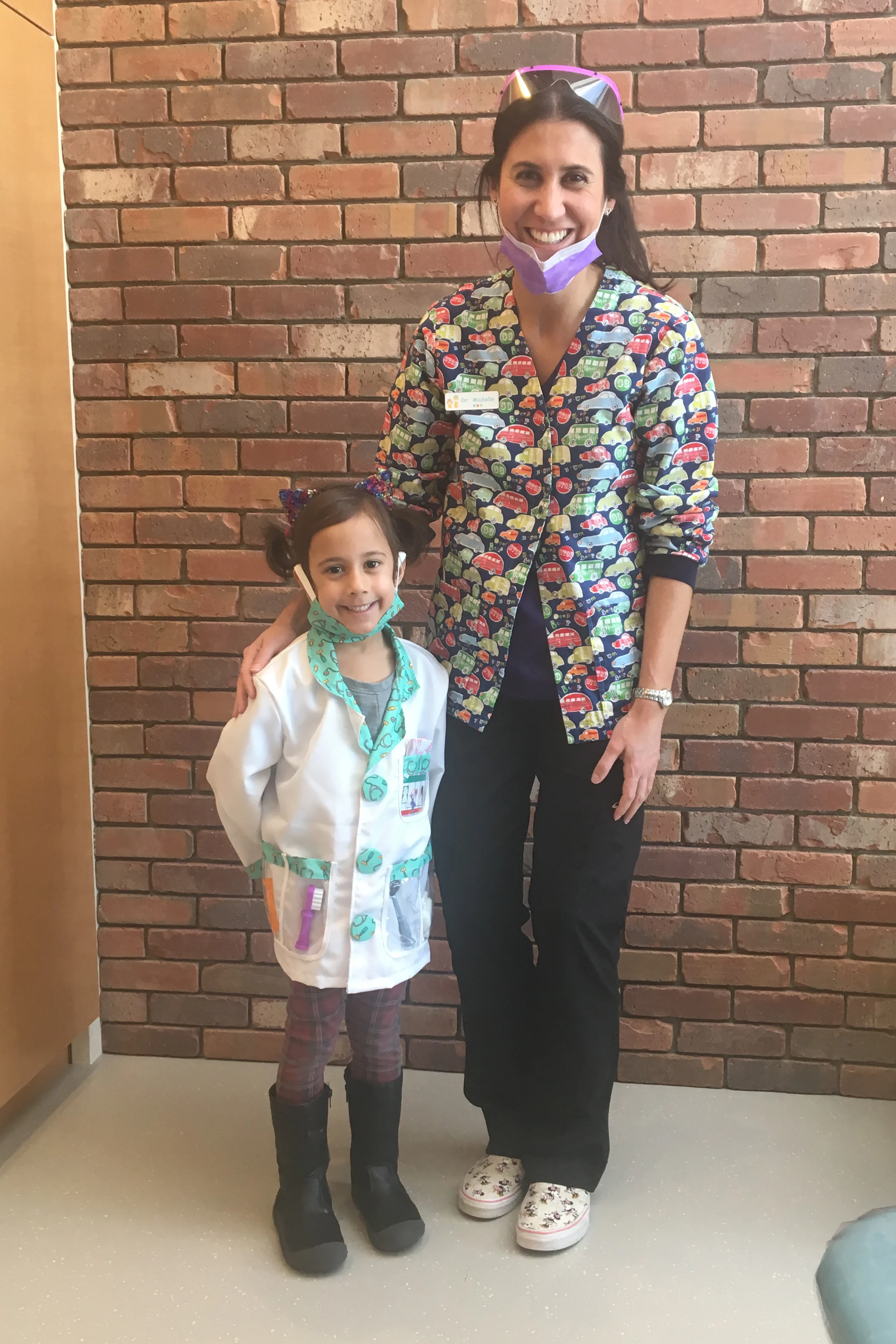first procedural visit
We strive to make this dental visit as positive and successful as possible. Dental anxiety often arises from the fear of the unknown, but rest assured, we are trained to handle fears and anxiety and will do our best to put your child at ease. Fortunately, pediatric dentistry has come a long way. We are open and honest and will explain what is happening in a way that keeps your child calm and comfortable.
During the procedure:
- You are welcome to come back with your child but when it comes time for treatment, we kindly ask that you are a "silent observer” and stand by quietly to give us a chance to earn your child’s trust.
- Please let Dr. Michelle do all of the talking - this helps your child focus on one person and ensures they don’t miss anything important.
- Dr. Michelle and her staff will talk to your child and explain exactly what they are doing, but please allow your child to make their own assumptions about how it feels.
- If your child becomes upset, please don't assume that it is because of pain. Sometimes children do need more freezing but there are a lot of other reasons they may start to cry too - for example: loud noises, keeping their mouth open, boredom or general anxiety.
- If you are anxious about dental treatment, your child may pick up on your anxiety and become anxious too. If possible, it is sometimes best to stay in the waiting room or have another guardian who is less anxious bring your child to the appointment.
What we say during an appointment
At Small to Tall, we like to be clear, simple and age-appropriate. There are certain traditional words we choose to avoid and replace them with our own pediatric dental vocabulary. We ask that you avoid these words as well and appreciate your cooperation in making your child’s visit as positive and successful as can be.
Some key words that we ask you not to use are: needle, shot, pinch, drill, hurt or pain. Our office uses our own pediatric dental vocabulary that conveys the same message, but is more pleasant and non-frightening to a child.
Traditional Words
"needle"
"drill"
"pull tooth"
"rubber dam"
"cavity"
Our Words
"sleepy juice"
"whistling toothbrush that sprays water"
"wiggle tooth"
"raincoat"
"sugar bugs"
Here are some phrases you may hear us use based on the age of your child:
- “We use a toothbrush that sprays water to wash away sugar bugs.”
- “We catch the water and sugar bugs with a noisy vacuum.”
- “Sugar bugs can leave a tiny hole in your tooth.”
- “We fill or “paint” that hole so no new sugar bugs get back in it.”
- “Sometimes we put your tooth to sleep with sleepy juice so you don't feel anything.”




